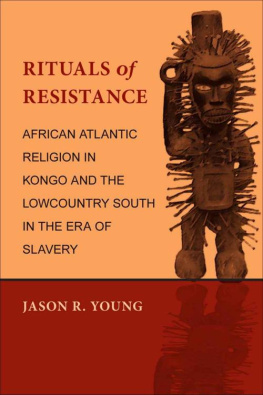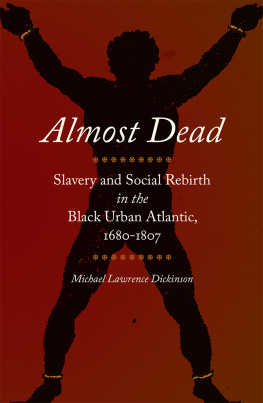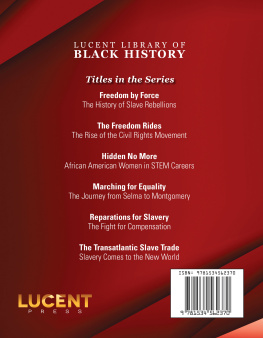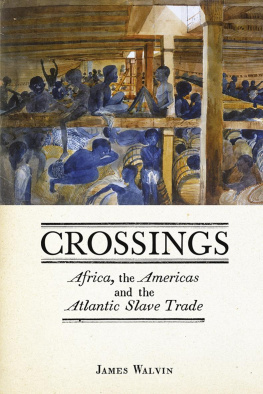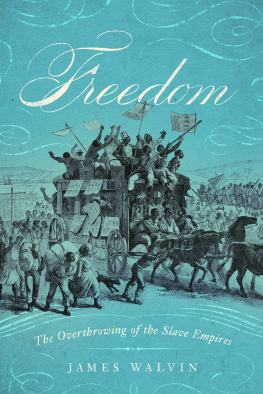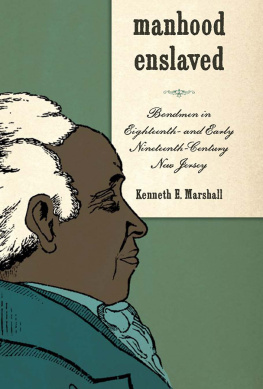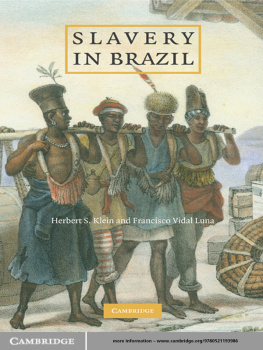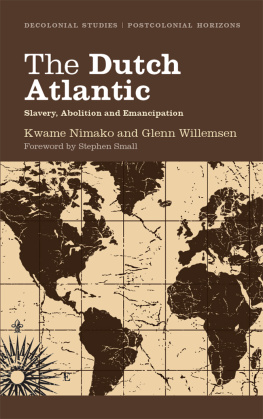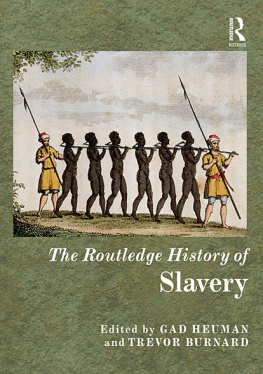RITUALS of RESISTANCE

RITUALS of
RESISTANCE
AFRICAN ATLANTIC RELIGION
IN KONGO AND THE
LOWCOUNTRY SOUTH IN
THE ERA OF SLAVERY
JASON R. YOUNG

Published by Louisiana State University Press
Copyright 2007 by Louisiana State University Press
All rights reserved
Manufactured in the United States of America
Louisiana Paperback Edition, 2011
Designer: Laura Roubique Gleason
Typeface: Minion Pro
Typesetter: NewgenAustin
Library of Congress Cataloging-in-Publication Data
Young, Jason R.
Rituals of resistance : African Atlantic religion in Kongo and the lowcountry South in the era of slavery / Jason R. Young
p. cm.
Includes bibliographical references and index.
ISBN 978-0-8071-3279-1 (cloth : alk. paper)
1. AfricansSouth CarolinaReligion. 2. AfricansGeorgiaReligion. 3. Congo (Democratic Republic)Religion. 4. AmericaCivilizationAfrican influences. 5. African diaspora. 6. AfricansMigrations. I. Title.
BR 563. N 4 Y 683 2007
305.896009dc22
2007006809
ISBN 978-0-8071-3719-2 (paper : alk. paper)
The paper in this book meets the guidelines for permanence and durability of the Committee on Production Guidelines for Book Longevity of the Council on Library Resources. 
Dedicated to
The Butterfly
who, like Icarus, ventured too close to a burning sun
who, like the Ibos, returned home
and to
The Beautiful Ones Not Yet Born
CONTENTS
TABLES AND ILLUSTRATIONS
Tables
Maps
Figures
ACKNOWLEDGMENTS
It is true, as many have noted before, that writing is a corporate enterprise. And so there are individuals and institutions, foundations and family members who deserve my sincerest thanks for the crucial roles they played in helping me bring this project to fruition. But with my mind on Deuteronomy 5:15 and Ntozake Shanges Sassafrass, Cypress & Indigo, I would like to start by thanking the slaves who were ourselves.
Sterling Stuckey served as my dissertation advisor, and his guidance and expertise have been indispensable. Indeed, Stuckey inaugurated, through his unwavering faith in the power and importance of slave folklore, a new way of thinking not only about the conditions of slavery but also about the lives of slaves. I mean my own work to be a reflection of the path that he set.
Several people read drafts of the work at various stages. Margaret Washington and Jane Landers kindly agreed to travel to Buffalo to participate in a book manuscript workshop. They took time out of their very busy schedules and prepared detailed comments and questions that helped me revise the project in its later stages. Then, as now, I have only my deepest thanks to offer, though I wish I could give so much more. I want to thank Michael Gomez especially for his comments. He has shown a genuine interest in my academic and intellectual development since we first met during my undergraduate years in Atlanta, Georgia. From that time to this, he has been a consistent and reliable source of support.
At various stages, I have received support from the Ford Foundation, the Gilder-Lehrman Institute for American History Research, the Schomburg Center for Research in Black Culture, the Nuala McGann Drescher Fellowship, the Julian Park Publication Fund, and the Baldy Center for Law and Social Policy (SUNY, Buffalo). Many thanks also to SUNY, Buffalo for funding several research trips. These institutions have certainly been important to me for the very necessary material resources that they have provided. But even more, the support offered by these institutions has had the added benefit of introducing me to larger bodies of interested people who have since become not only colleagues but also dear friends.
Others have helped in incalculable ways. These include Marcellus Barksdale, Alton Hornsby Jr., and Augustine Konneh, each of whom in their own way introduced me to the discipline of History. Sterling Stuckey, Ray Kea, Sharon Salinger, and Ralph Crowder guided me through graduate level training. Jermaine Archer, Jennifer Hildebrand, Frans Ntloedibe, Karen Wilson, Frederick Knight, Walter Rucker, Kwakiutl Dreher, Rahel Kassahun, Millery Polyn, Lisa Gail Collins, Akil Houston, Eric Taylor, Christopher Span, Susan Cahn, Kari Winter, Erik Seeman, Pat and Sheila McDevitt, Felix Armfield, Lillian Williams, and Surrendra Bhana have all supported and encouraged me.
The staff at several research institutions were vital in the researching of this project, especially those at the Schomburg Center for Research in Black Culture; the Georgia Historical Society; the South Carolina Department of Archives and History; the South Caroliniana Library; the Avery Research Center in Charleston, South Carolina, especially Sherman Pyatt; and the South Carolina Historical Society, especially Jane Aldrich, Mike Coker, Mary Jo Fairchild, and Lisa Hayes.
To my father, Michael; my mother, Geneva; my sister, Alicia; my nephew, David; and the rest of my family, I owe a debt that I will never be able to pay. For true inspiration, I thank you, Idris. To the butterfly, I offer my deepest thanks and, as always, a Love unconditional.
I hope to repay all of you for all that you have done for me, InshaAllah.
RITUALS of RESISTANCE
Introduction
I am remembering Reemas boythe one with the pear-shaped head. Once a child of Willow Springs, he returned to the small island off the coast of Georgia and South Carolina after having graduated from a mainland college. He came back toting notebooks, a tape recorder, and a curled, pensive lip. Even more than that, he carried about his person a rattle of a tongue, blathering of ethnography, cultural preservation, unique speech patterns, and the like. Perhaps because he was a child of the islandor maybe even in spite of itthe people of Willow Springs indulged him as he went about studying the people and place of his youth. One resident, Winky, sat for hours chewing up the expensive tobacco the boy had bought, spitting it into a can so that Reemas boy could record the cadence and tone of it.
Months passed, and in return for their kind cooperation, Reemas boy sent everyone signed copies of the newly published monograph based on his extensive fieldwork conducted at Willow Springs. According to Reemas boy, the people of Willow Springs did not know very much at all about themselves: Being [they were] brought here as slaves, [they] had no choice but to look at everything upside-down. And then being that [they were] isolated off here on this island, everybody else in the country went on learning good English and calling things what they really was while [they] kept on calling things ass-backwards. And [Reemas boy] thought that was just so wonderful and marvelous, etcetera, etcetera.
I suspect that I have more in common with Reemas boy than I would like to admit. Like him, I too am possessed of an inquisitive spirit and at least some certainty that questions, if sufficiently researched, can be answered. Like Reemas boy, I too have chosen a vocation that presumes that cultures and histories are such as may be adequately transcribed. We are both confined, to a greater or lesser degree, to a particular discipline, a certain category of sources, and a prescribed methodology.
Next page
